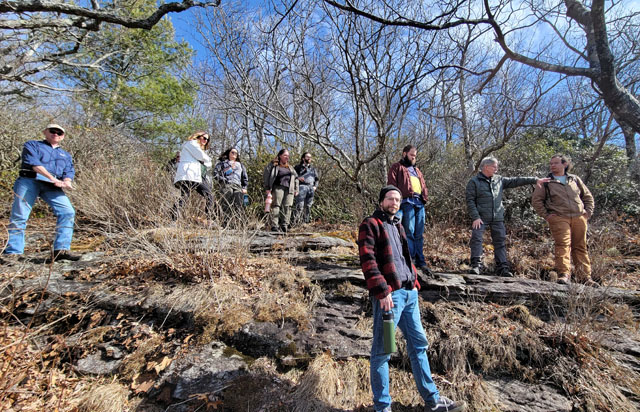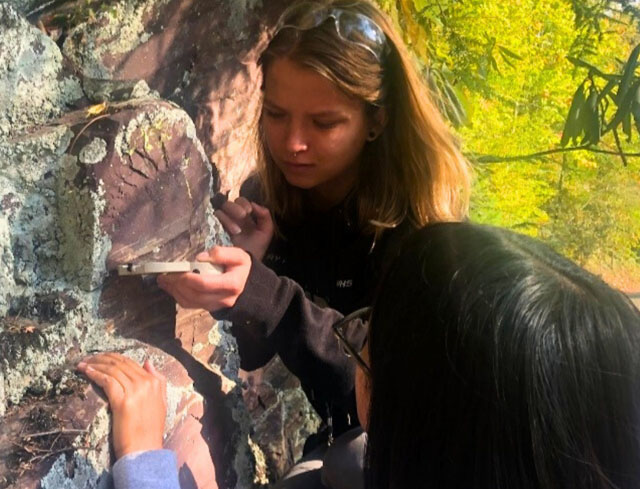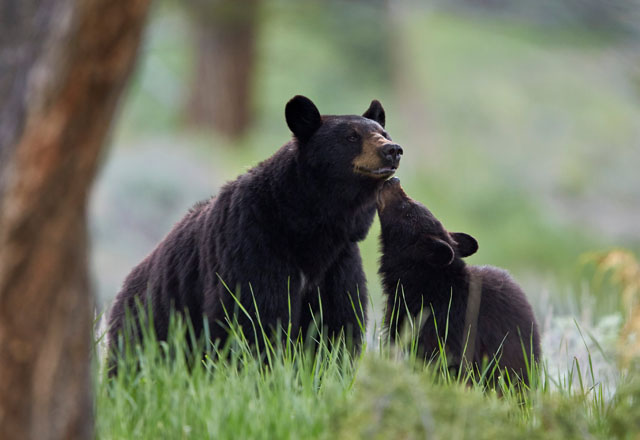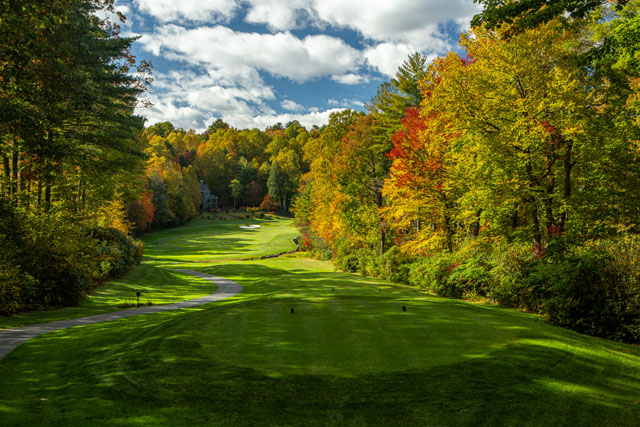Written in the Mountains
03 Apr 2024
Our modern story as narrated by the geological record
Story and Photos by KRISTIN LANDFIELD
“The Mountain sat upon the Plain
In his tremendous Chair –
His observation omnifold,
His inquest everywhere –
The Seasons played around his knees,
Like Children round a sire –Grandfather of the Days is He,
Of Dawn, the Ancestor.”
“The Mountain sat upon the Plain” by Emily Dickinson
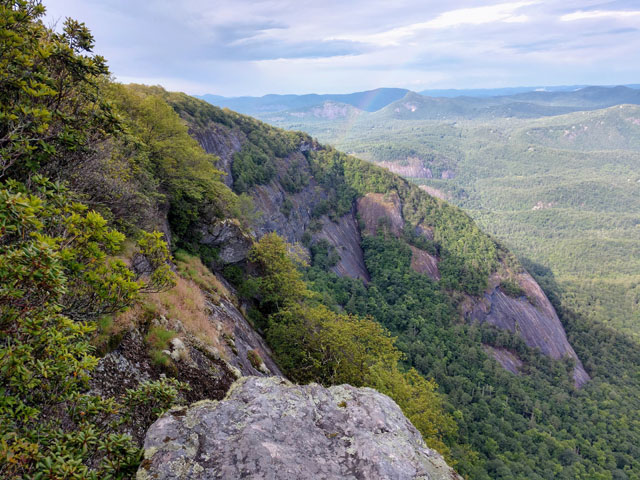
The history of the Southern Appalachians is written in the physical history of the mountains themselves. Life as we know it—right now, in 2024—operates in direct descendance from the geological legacy of our present surrounds. This specific geology is the antecedent to our soil; our soil is the progenitor of our flora; and our flora then powerhouses the ecosystem, converting light to sugar and sugar to energy. This energy, borne of one of the most botanically diverse regions in the world, fuels all subsequent organisms in the food chain, all the way up to an elegant plate at Lonesome Valley’s Canyon Kitchen. The story of life in these mountains is inextricably tied to the history of the mountains themselves.
Just outside Highlands, NC, Whiteside Mountain presides over the landscape at 4930 feet in elevation, majestic and impenetrable. For the thousands of people who summit Whiteside Mountain every year, there is a sign that reads “What’s a Pluton?” with a brief explanation of how cooling magma hardened deep under the surface of the Earth. Millennia of erosion revealed the monolith known today as Whiteside Mountain. Geologists believe this local pluton is one of the oldest mountains on earth, somewhere between 390-460 million years old, and once stood as high as the Himalayas. Over eons, erosion from these grand mountains filled the adjacent plains, raising the foothills and flatlands up above sea level. What now remains is an ancient formation we know as Whiteside Mountain (Sa’nigila’gi to the Cherokee), standing as a sage keeper of this region’s history.
The section of the Blue Ridge mountains captured by the Highlands-Cashiers Plateau has been dubbed the Yosemite of the East, presenting the tallest monolithic faces this side of the Rockies. Particularly spectacular is Whiteside Mountain, a striking figure along the Eastern Continental Divide with its precipitous glistening cliffs. Each October and February, the “Shadow of the Bear” still draws reams of visitors to a pull-off on Highway 64 to witness an incredible phenomenon. On sunny evenings during those several weeks, just as the sun begins to set, a shadow representation of a bear emerges to blanket the rocky terrain of the mountain’s southeastern vantage point. This arresting shadow returns perennially, a symbol of the abiding natural history of the region.
Whiteside has endured infinite changes. The arrival of modern humans is just a shred of time in its long history. Its hulking grandeur sparked the imagination of the region’s earliest inhabitants. This pluton continues to call adventurers, its daunting cliffs presenting an irresistible challenge for the intrepid rock climber. In 1950, engineers developed a road to ascend Whiteside, thus offering wider access to the spectacular peak. By the 1980s, preservationists in western North Carolina led reintroduction and protection efforts for the Peregrine Falcon. As the fastest member of the animal kingdom, Peregrine Falcons represent a symbol of strength and victory; however, disturbances in breeding sites contributed to near extinction in the region. From February through June on the Blue Ridge Escarpment, sections of local climbing routes are closed, safeguarding these revered denizens.
The tectonic forces that forged Whiteside’s monumental form likewise cleaved the many fissures from which this region’s abundant springs and waterfalls flow. This mineral-rich water supports one of the most biodiverse regions on earth. Botanical opulence in the Blue Ridge is a circumstance of Pleistocene glaciation, during which the glaciers’ southward advance did not quite reach the area, making it a biological refuge from ice. High elevation allowed northern species to remain and comingle with southern life forms, creating an ecological sweet spot. Botanizing the region in the late 18th century, Philadelphia naturalist William Bartram celebrated its rugged vistas: “I beheld with rapture and astonishment, a sublimely awful scene of power and magnificence, a world of mountains piled upon mountains.”
Today at Whiteside Mountain, layers of indigenous ferns, moss and wildflowers accompany hikers throughout the trail. Along the wind-whipped southern escarpments, Hartwig’s Locust and ruddy Vaccinium cling to the rock crevices, while dainty pink Corydalis emerge from adjacent cracks. With wonder and poetry, Bartram depicted the geological circumstances that render this region sublime. When he documented the exquisite ecology, he did so in the context of these astounding geological phenomena: the former is a consequence of the latter. Here on the plateau, the history of a Catawba Rhododendron, of each student at the Highlands Biological Station, of the talented chefs offering regional cuisine, of the Joe Webb chink cabins, or of an orchestra playing on Cashiers’ Village Green is created by these mountains and supported by them as well. Herein lies our inflection point: after 400 million years we scurry up Whiteside’s trail, relatively miniscule in time and place, but disproportionately mighty with power. Let us tread lightly.


